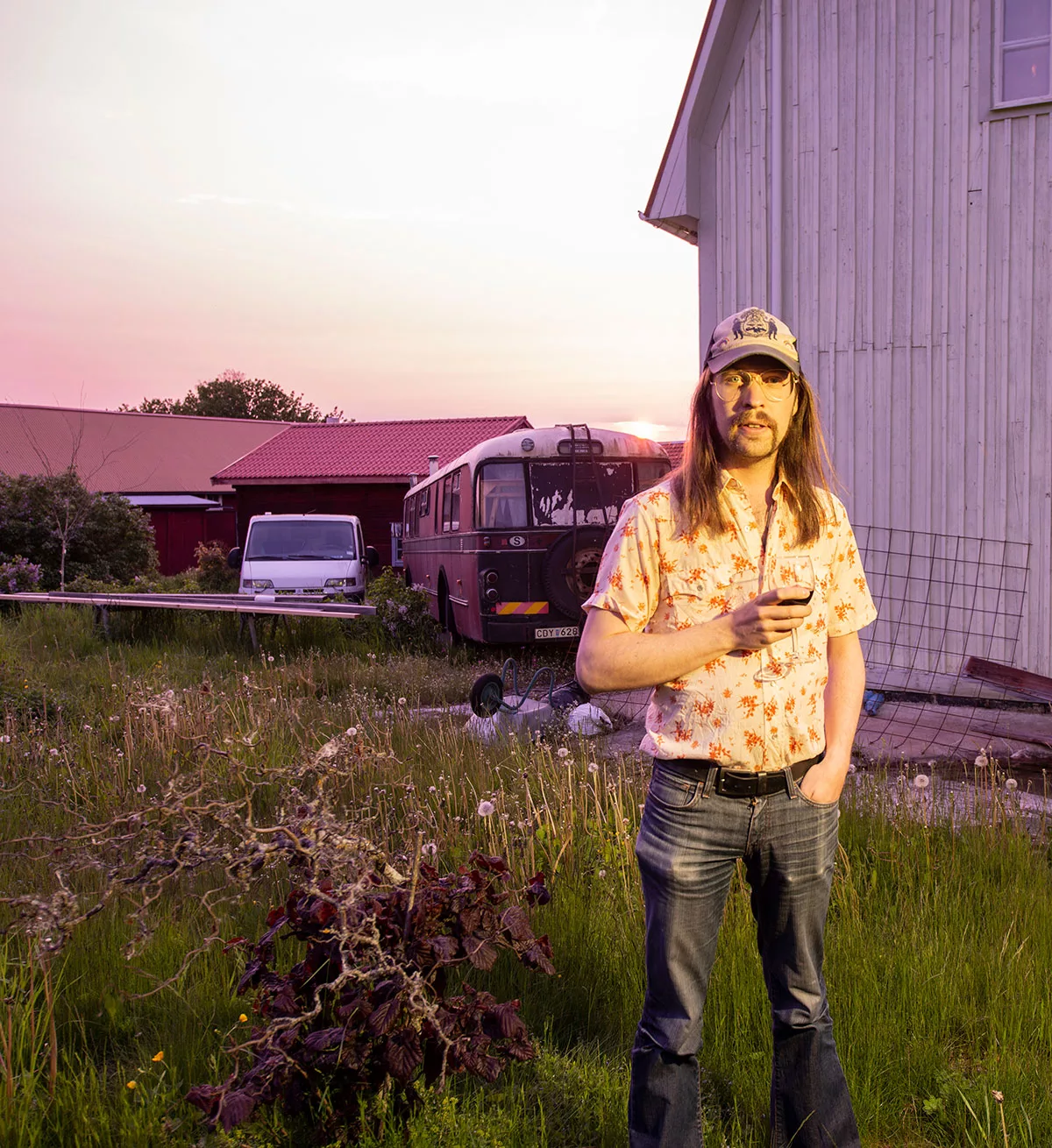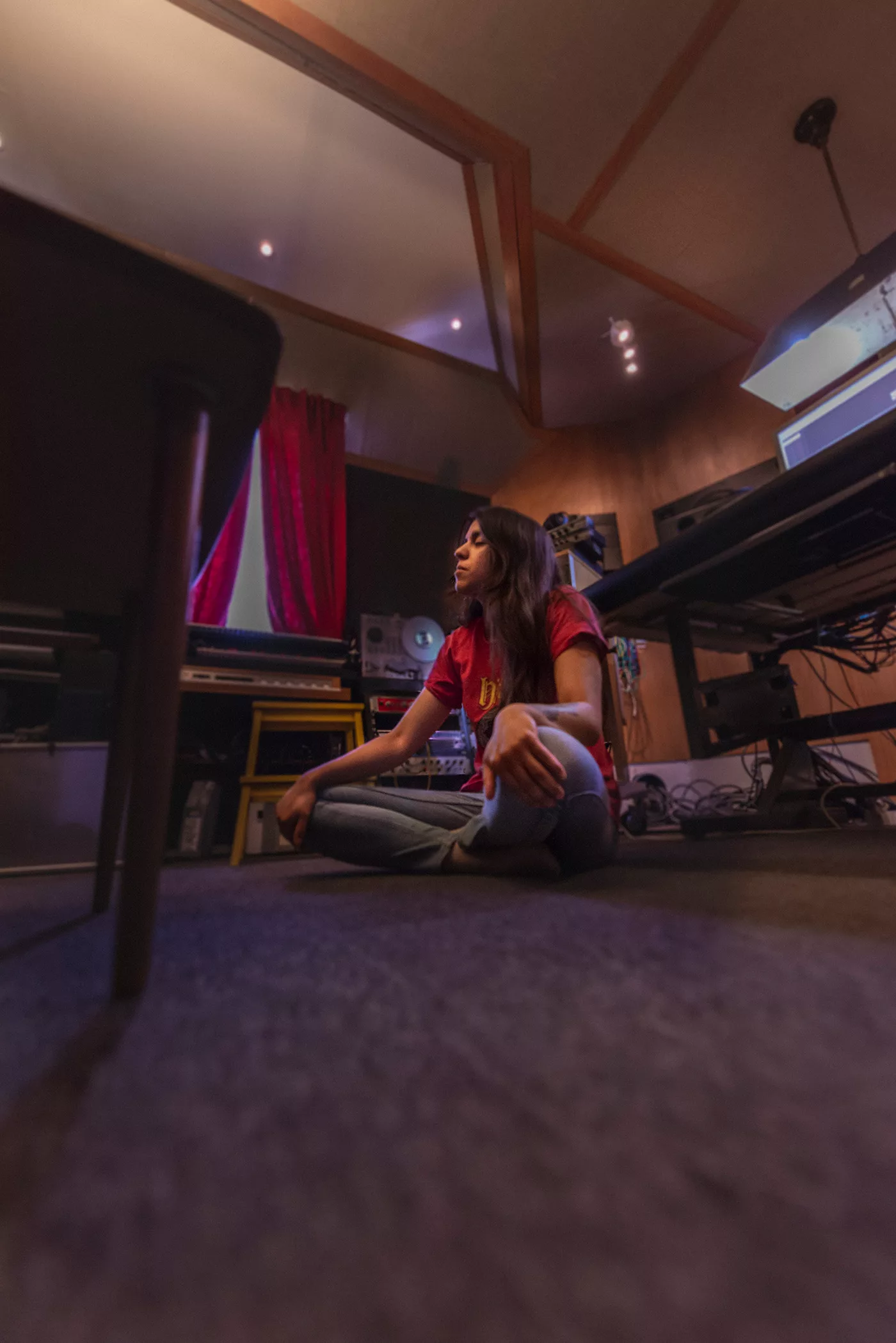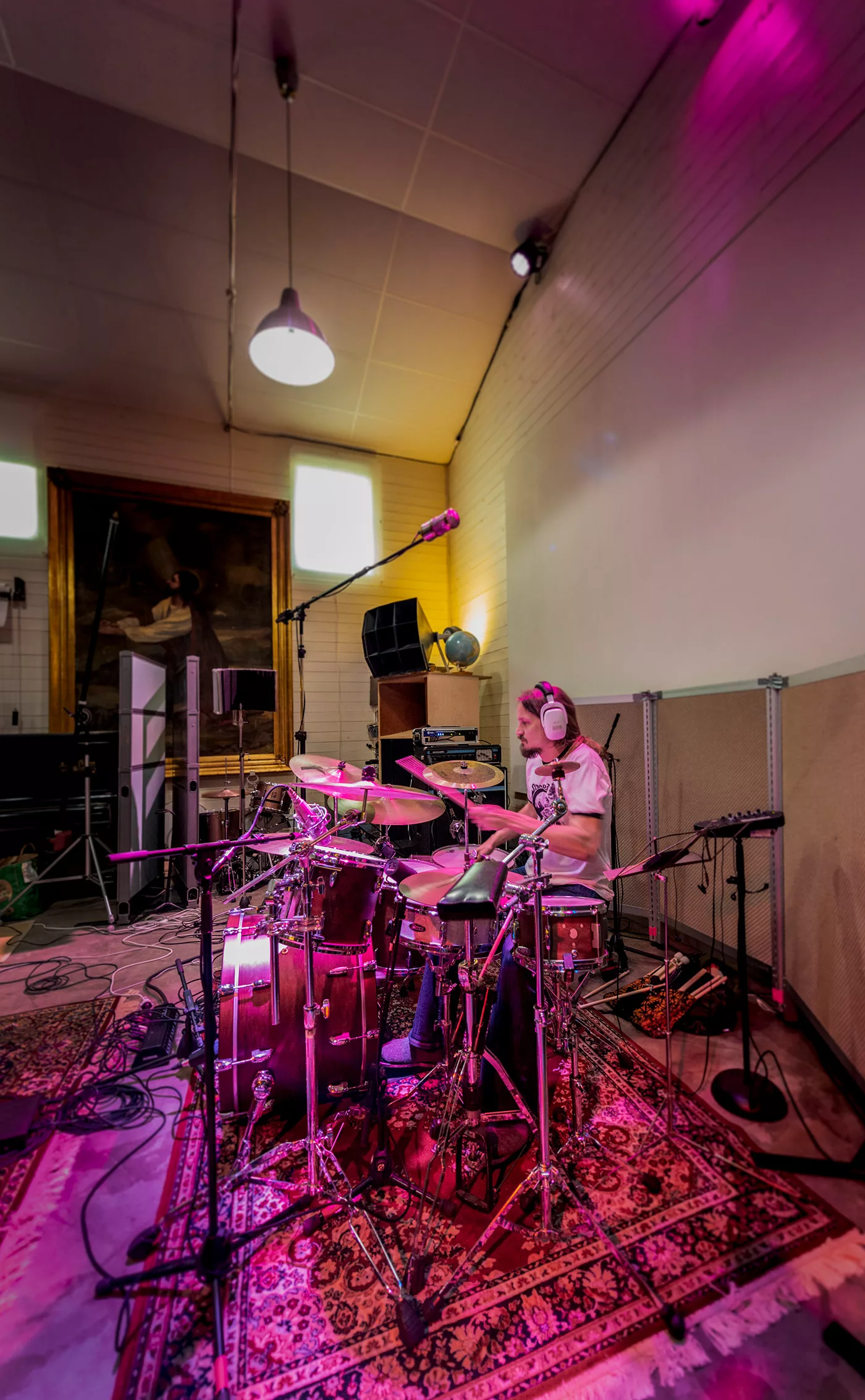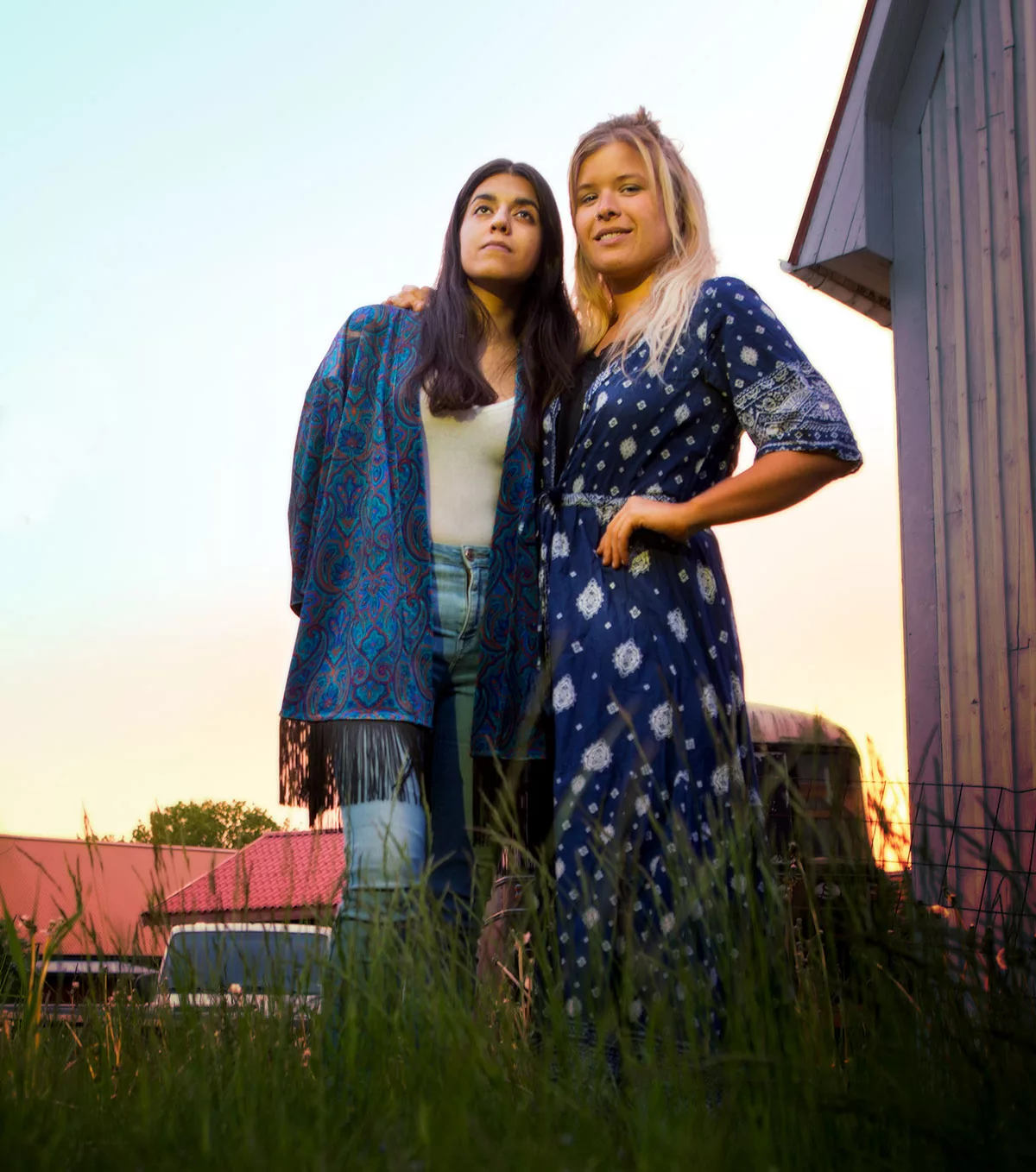Vinyl de-luxe från Siena Root
It is rare for a record to be 100% analogue recorded, mixed and half-speed mastered these days. But that’s exactly what has taken place with the latest release from Siena Root!
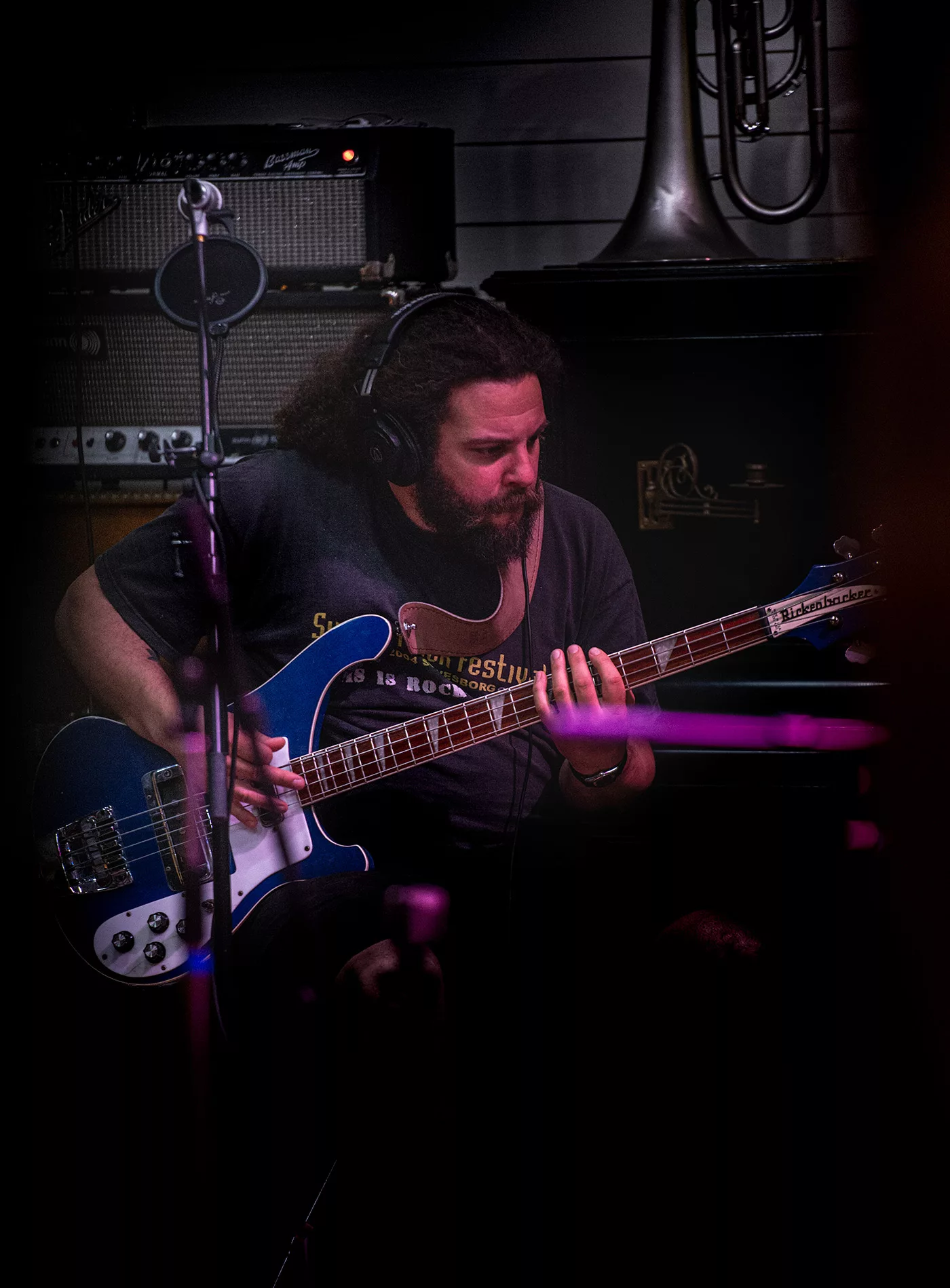
Sam Riffer a.k.a. Samir Eriksson, bass player and founding member, Siena Root
Firmly planted in the early ’70s hard rock with influences from Sabbath, Purple and Zeppelin Siena Root goes further than most in exploring what it is that makes the music sound like it did around the magical years of 1970 to 1974. No stones are left unturned and even the tape formula matters.
– The drums sounded better in the first half of the 70s. Then something happened, says Samir Eriksson, founding member, songwriter and bassist in the band.
– The guitars sounded different. Everything sounded different. And when I started to research why I realized that it was not just about how different instruments were played but it had to do with different sound ideals, which in turn were linked to what you could do in a studio at that time. The sound was very much about how the music was recorded.
– We started recording on tape ourselves, because a lot of the music we liked was recorded on tape. Initially with simple equipment but as time moved on with better equipment.
– You would never guess what brand of console that was used for our first album, Samir says with a smile.
The Secret of Our Time
An October evening in Hägersten outside of Stockholm. The mix of the new album, The Secret of Our Time, is at the final stages. Samir and Love go through the steps. Tape pieces on the mixer mark the settings. The Otari MX-80 is started at the same time as the Studer. Faders are pushed up and down and analogue effects are routed in and out of the soundscape. After three attempts, a first approved mix sits on the master tape which is rewound and listened to. After some discussion a few adjustments are decided upon. After cleaning the tape-heads with isopropanol the drill is repeated and now every move is in the right place!
Touring
Siena Root has many fans around the world. Which has led to a fairly extensive life on the roads, in Europe in particular. I ask about special places Siena Root played on and Samir mentions Dunajam in Sardinia.
– The festival is always in early June, before midsummer. It’s quite a special place, says Samir. The organizer keeps the festival down in size and you have to have a personal invitation to go there. The locals are positive. No ticket checks, no fenced areas. Much stoner-rock, doom, psychedelia. Dunajam is pretty homogeneous music-wise and manifests itself in two concerts a day on different parts of the beautiful island.
– The concert venue moves all the time, sometimes it’s on the beach, sometimes in the mountains. We played there in 2010 and 2015.
– Then there’s the Burg Herzberg festival, a big hippie festival in true spirit of Woodstock. There are also many smaller festivals in the same vein in Germany.
– We have lots of fans out there. Over time, we have had very good relationships with many of them. Almost like family. It has happened that fans have come to visited us in Stockholm.
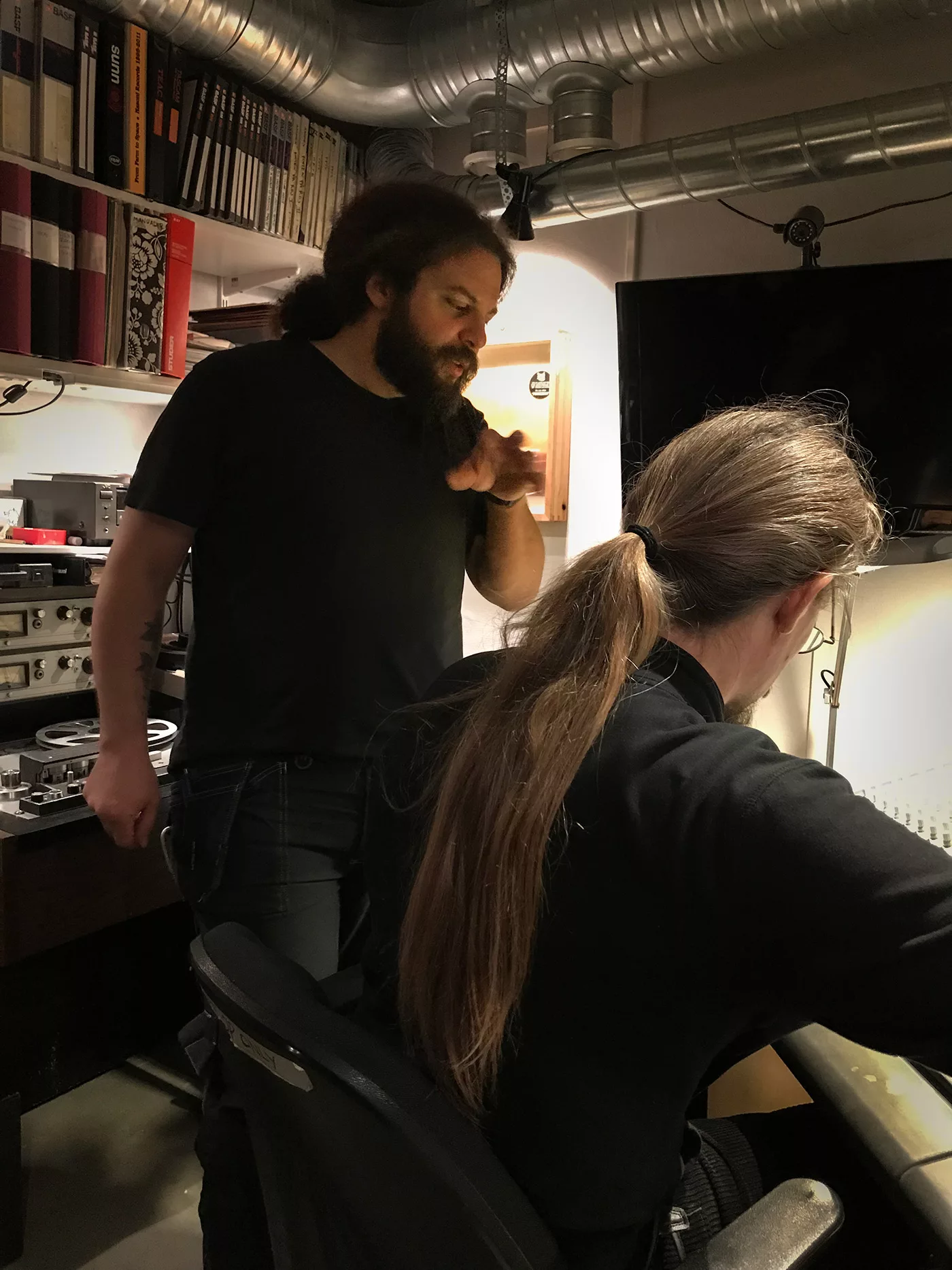
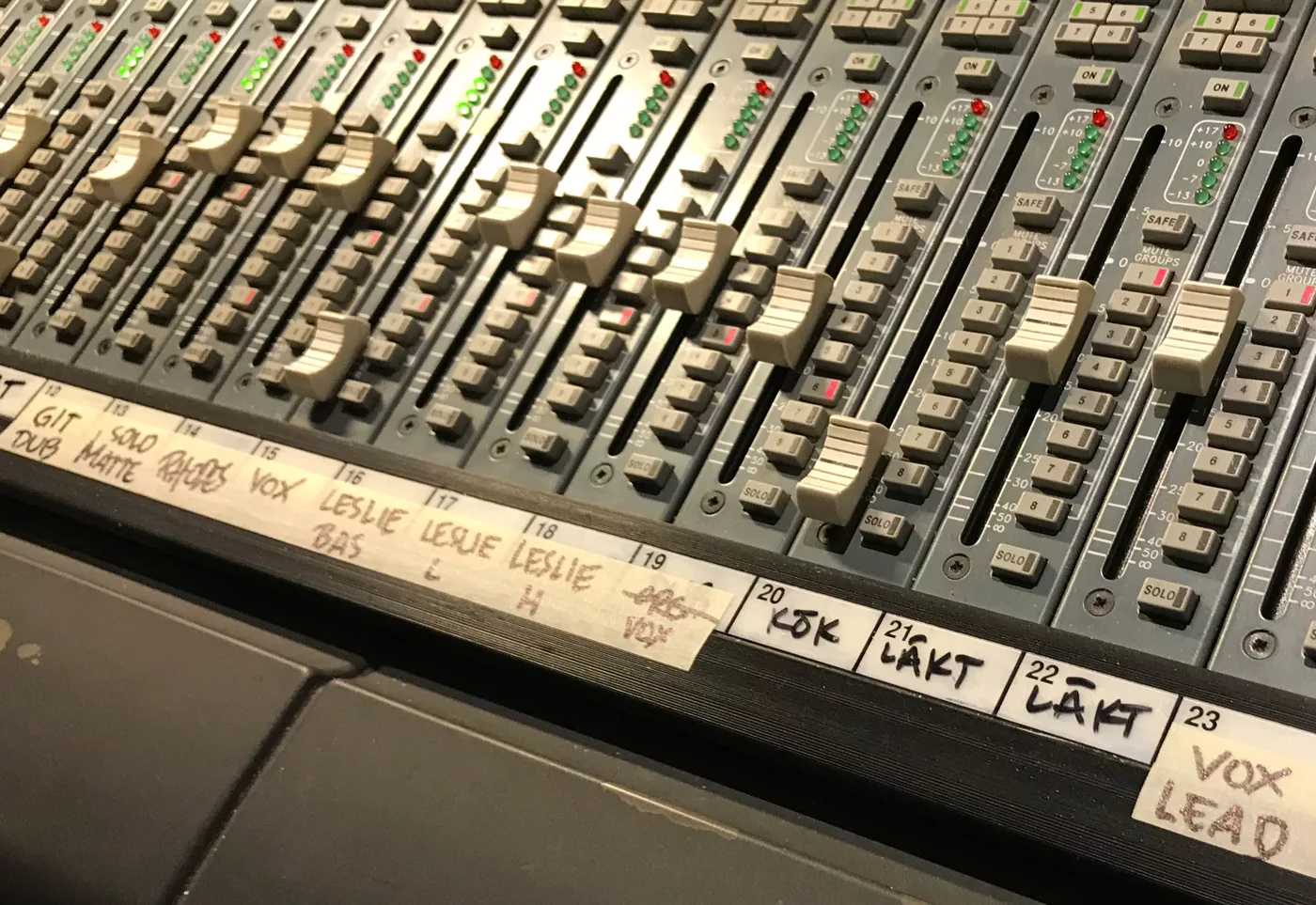
The mixer during mixing The Secret of Our Time. Note the faders labeled “kök” (meaning kitchen) and “laktare”, (stands), which are common mic placements in the Omnivox studio.
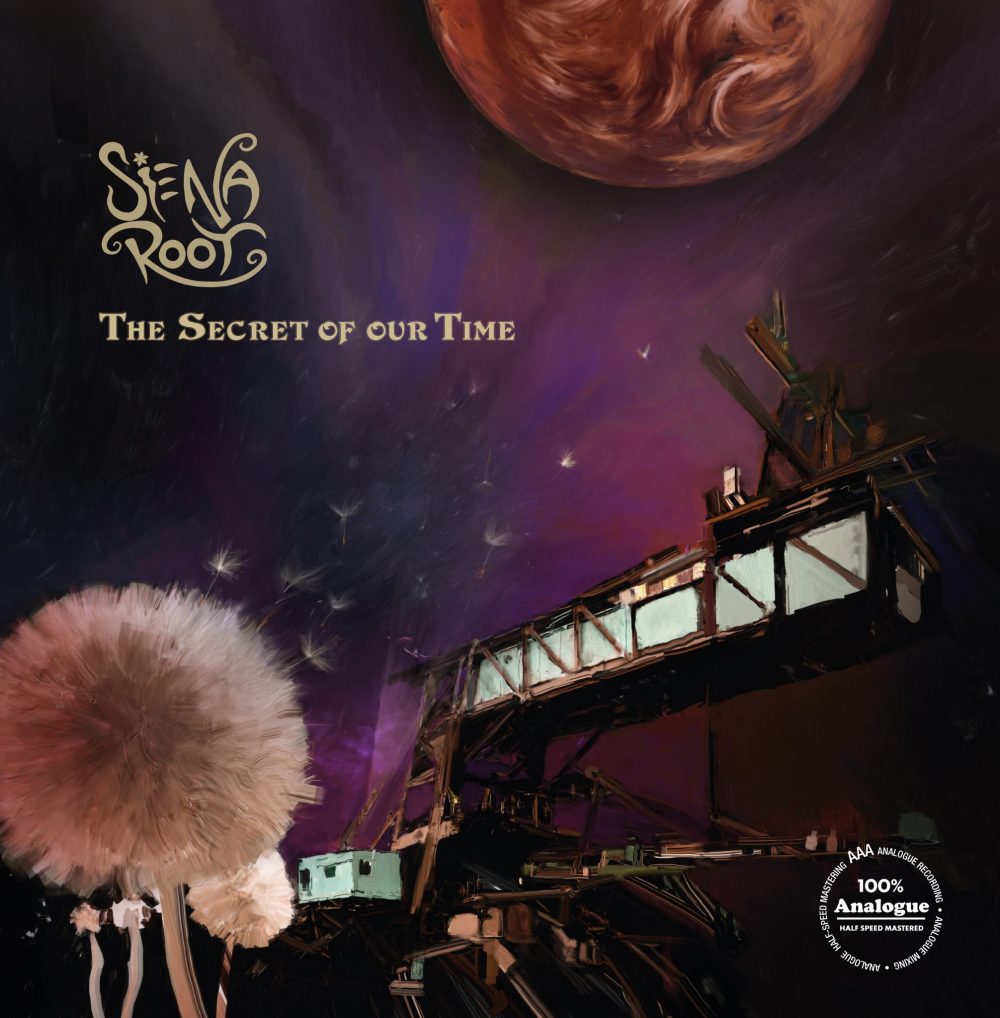
Your chance to win a signed limited gatefold vinyl copy of The Secret of Our Time!
Here’s your chance of winning a piece of analogue delight! We are giving away one (1) fully signed copy of Siena Root’s new half-speed engraved vinyl record, The Secret of Our Time, on vinyl! The first 1000 copies of the album will be gatefold and this is one of them. A true collectors gem!
There are two things we want you to do in order to participate in the lottery:
1. subscribe to the Omnivox Newsletter (below). Be sure to write “SR” as a message and don’t forget to write your full address, in case you win!
2. share this post on Facebook
Winners will be drawn on January 1, 2020 and published on the Omnivox Facebook page.
Subscribe!
Sure, I want to subscribe to news and offerings from the Omnivox Studio.
Please write “SR” in the message field and don’t forget your full address!
The Siena Root story
“We said we’d talk next week and maybe jam a bit.”
– The year was 1996 and I met Love at a friend’s party, says Samir. I was 19, Love was probably 17. I had just returned from a year in the US and had decided that music was what I wanted to dedicate my life to. Love probably had something similar in mind and told me he was playing drums and wanted to start a band.
– We didn’t know then that this was the beginning of an intensive collaboration that has lasted for more than 23 years so far!
– We said we would talk later. In most cases, this is probably a fairly common conversation that can occur at a party but this was actually done! We met and jammed with a guitarist named Fredrik. In the beginning we played a few Kiss and Black Sabbath songs and also some Nirvana, says Samir.
– Pretty soon we became serious and started rehearsing several days a week and also try to get gigs. We could agree on the Sabbath sound and we started to write our own music pretty early on.
– We picked up a guy named Martin Linder on guitar, he eventually replaced Fredrik and the we became even more serious. Martin is a luthier today and still helps the band on and off with everything from setting up guitars to photography.
Siena Root
– Around 1998 we took the name Siena Root and it was also around then that the Hammond organ became a big part of our sound. We started collaborating with different organists. Martin left the band around 2001 and was replaced by KG West, the guitarist who participates in Siena Root’s first four studio albums.
The humble beginnings:

First gig with Samir and Love in the same band, Skarpnäcks Ungdomsgård, Stockholm, autumn 1996.
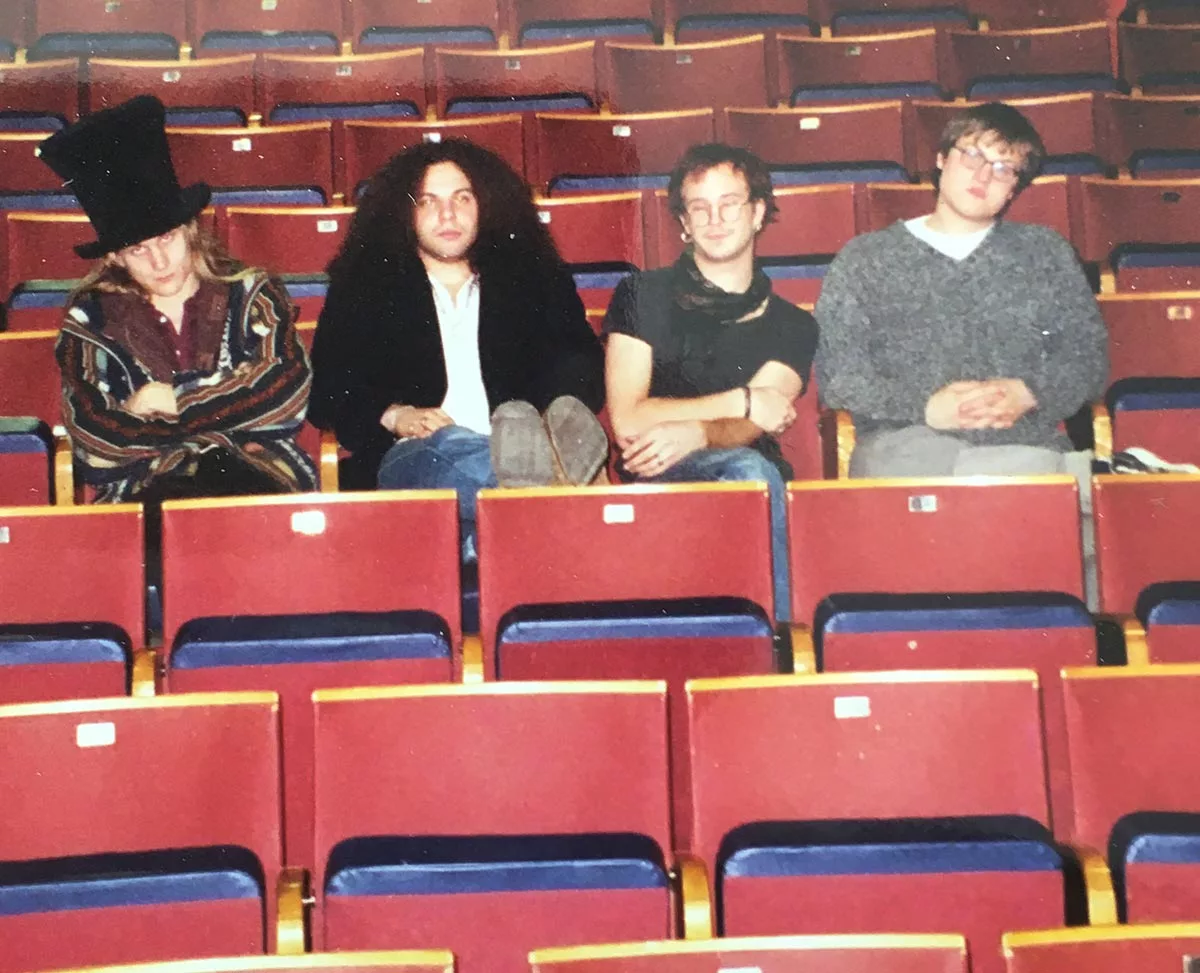
Fotosession at Tellusbiografen in Midsommarkransen, Stockholm 1999. Samir, Love, Martin och Danne (organ)
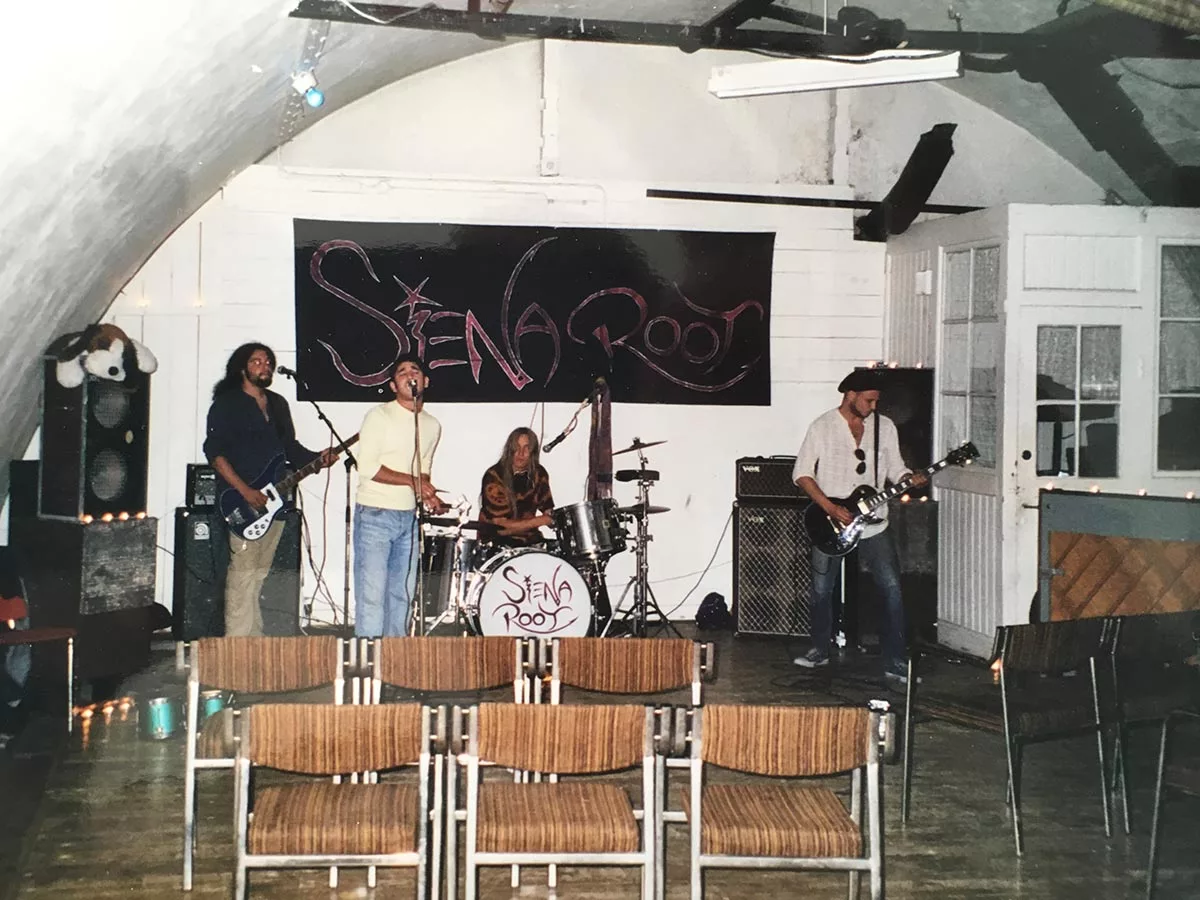
Gigging at Folkkulturcentrum which at the time was located on Skeppsholmen. Spring -00.
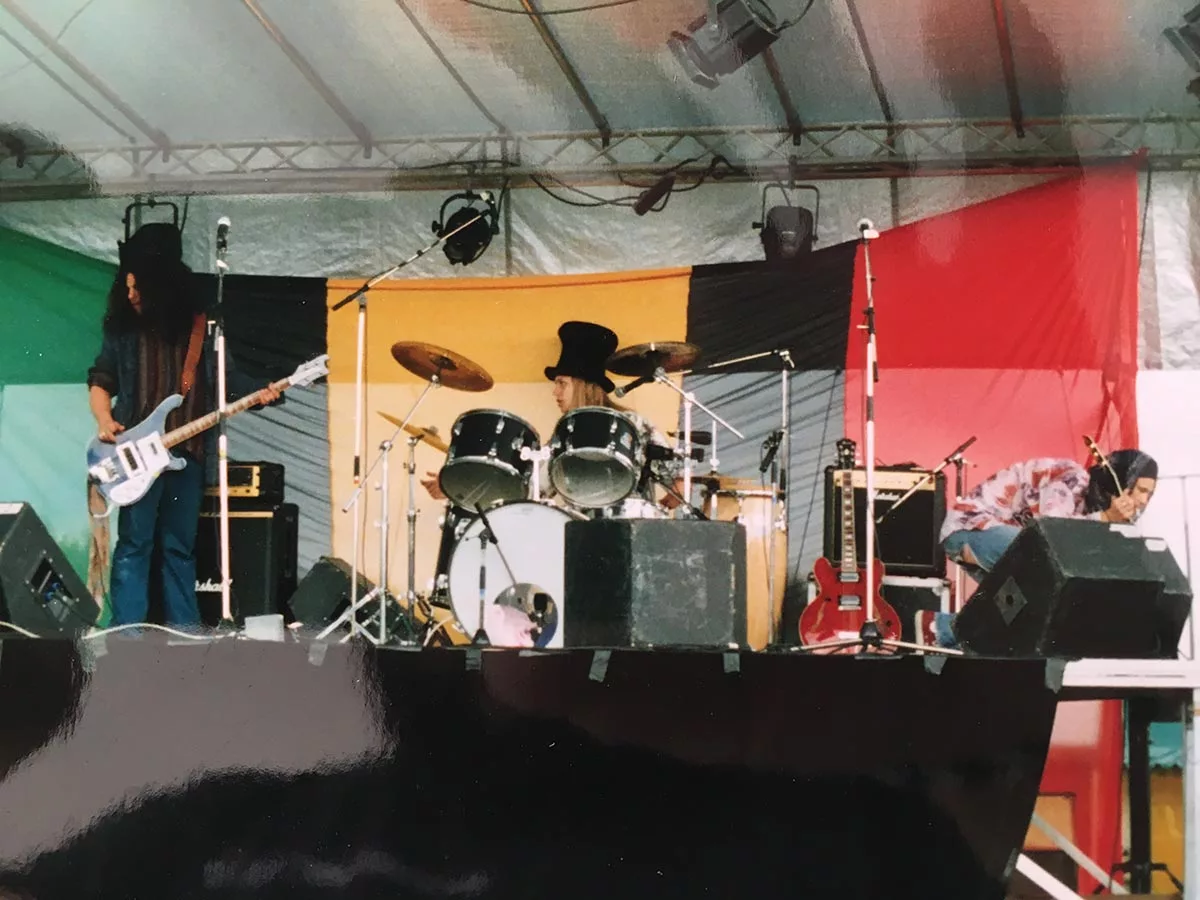
First outdoor festival, Järvafältet Stockholm, summer of -97
Rockpalast, 2006
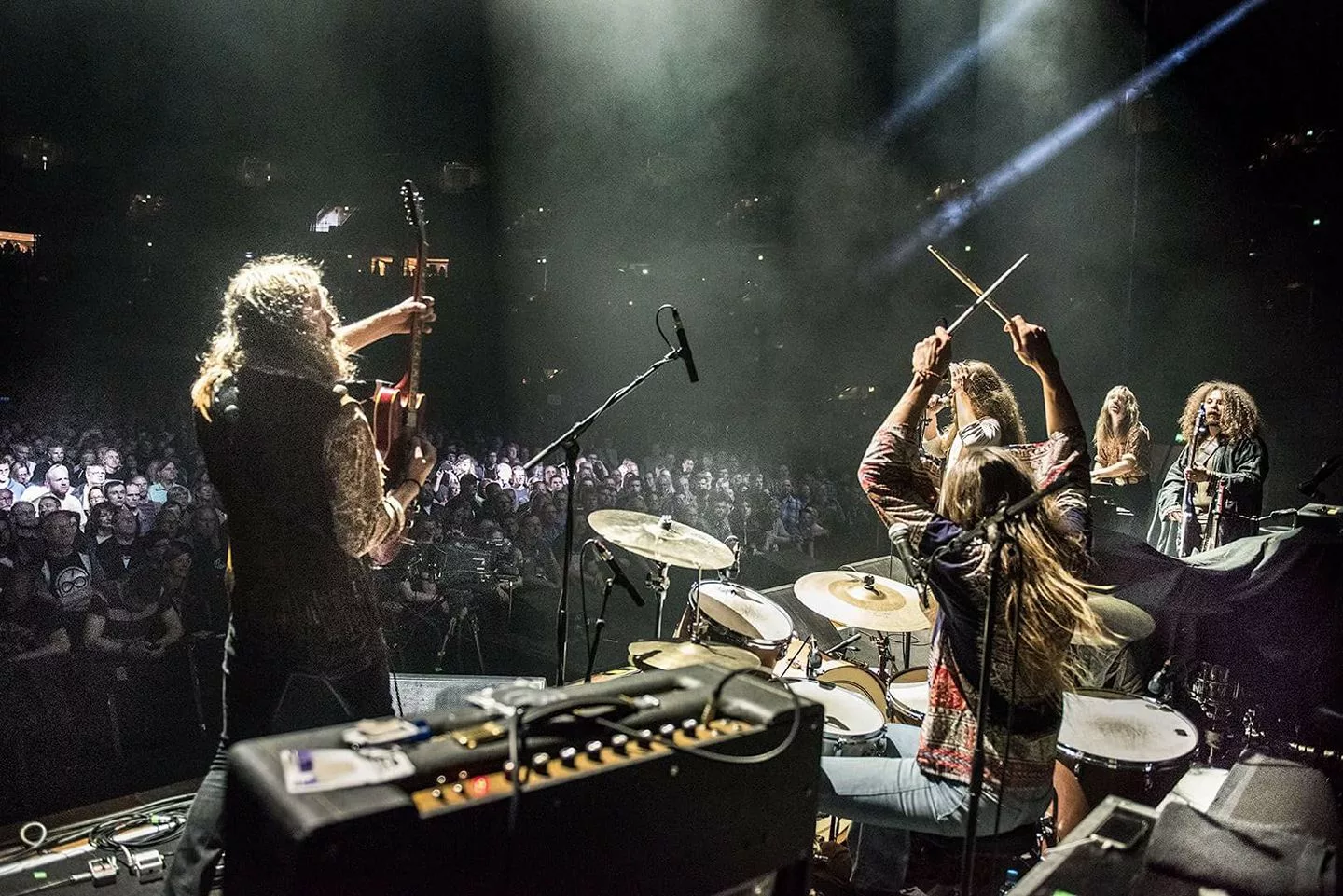
MB Arena in Berlin 2017. Photo by Clemens Mitscher
– As we worked on the songs that gave us our first record contract, we brought in a guy named Oskar Lundström on song and organ. Kg knew him and that way he found himself in the band. In 2003 we recorded the debut “A New Day Dawning” and did three European tours together.
Change of crew
– Oskar was no longer happy living on the roads and was replaced by Sanya, says Samir. Together with Sanya we recorded a single and then our second album “Kaleidoscope”. We toured quite extensively at this time and between 2005 and 2007. I think we did about ten European tours. Sanya was then replaced by Sartez, who we had worked with briefly around 2000–2001 and we did the album “Far from the Sun” together.
– After that album we couldn’t agree on the musical content of the upcoming album “Different Realities” and Sartez left and we chose to continue as a trio with guest musicians, the concept of a core that drove the band and many different guests on stage during live performances was inspirational and has been a working method that we have come back to from time to time over the years.
– In that way we recorded our live album “Root Jam” which was released in 2012. After that, Kg left the band and we started working more with Erik Petersson and Jonas Åhlén who had joined us on stage on many occasions.
– Around 2013 we also made our first appearances together with Matte Gustavsson and it was this setup that did the album “Pioneers” in 2014. Almost the same guys went to the legendary Silence studio in Värmland in 2016 to record “A Dream of Lasting Peace “. Jonas had left and we had recently started working together with Samuel Björö who sings on that album. The album was released in 2017 and on that release tour we got the honor of joining Deep Purple on a couple of gigs. Finally arena rock!
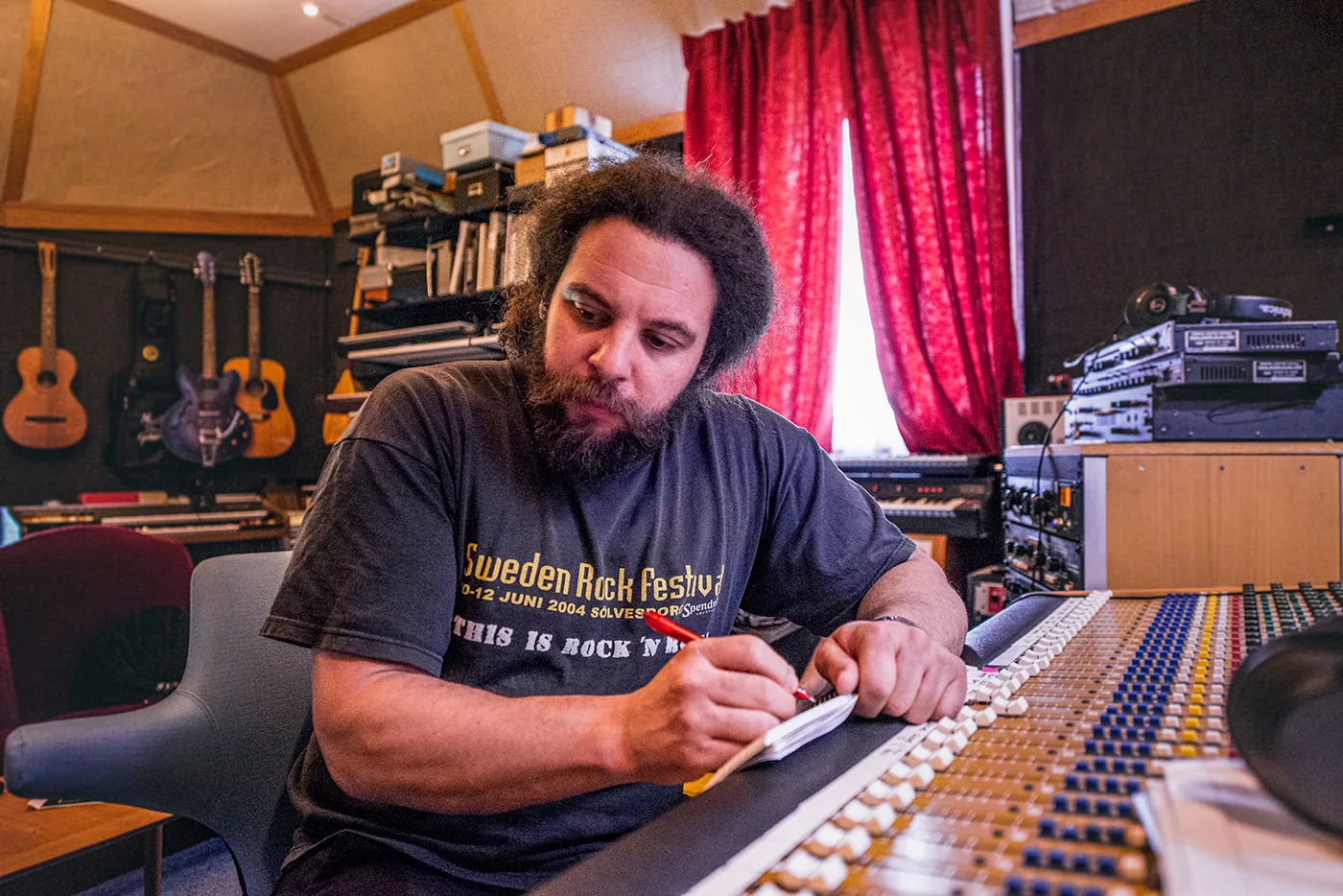
How does a song come to life?
– Most things develop by jamming together, often based on a riff or a small hook that someone brought with them to the rope. We develop and try out the ideas until the song is born. It usually happens that the music comes first and the lyrics are written afterwards. But it happens that we start with some chords and a melody someone has come up with at home, by the piano or with an acoustic guitar.
What music have you grown up with yourself?
– I’m not from any distinguished music family. The only one in the family who was interested in music was my grandfather, says Samir.
– Grandpa was a player and folk musician, so I hope I picked up something from constantly hearing the violin.
– As a 7-year-old I discovered the band Kiss, Heaven’s on fire was a big hit in 1984 and there was always someone in the circle of friends who had managed to tape the video to it so you could sit and watch in secret, hehe! They soon learned from the older children that this was crap and that they would listen to “old Kiss”, with makeup.
– So I forced my parents to Åhléns where you could buy LPs for SEK 45. The weekly money always spent on the Kiss albums with the coolest covers. First off, “Destroyer” was closely followed by “Love Gun” etc. But as a child I was not only attracted by the music, the covers were equally important.
– In my early teens, I had a great interest in reggae and rastafari and I listened to everything I came across from Jamaica. At the age of fifteen, a friend played a Black Sabbath album for me and I was completely taken. Was it possible to play like that??
– I had just started playing some bass and through Sabbath I discovered Led Zeppelin and Deep Purple. To me Zeppelin, Sabbath and Purple was “the big three” and it’s fair to say that these three formed the basis of my musical journey and further listening.
Analogue recording
Siena Root doesn’t just record analogue. They also mix and master analogue. The whole chain is 100% analog and of what is finally released on vinyl, nothing has ever been digitzed.
– We usually bring the master tape with us to a company in Berlin that still has equipment for analogue mastering and engraving.
Half-Speed Master
With the new record they decided to take it a step further.
– I’ve always dreamt of making a half-speed master, says Samir. To do that, I contacted several different mastering studios. We contacted Abbey Road but it turned out that even they couldn’t make half-speed mastering from 1/4″ tapes. Eventually we found The Exchange studio in London.
– All of the settings you normally make when mastering will be different if you work at half the speed, says Samir. EQ and compression are completely different and it takes a lot of experience to be able to set everything so that the end result is really right.
You have just returned from London, what have you done there?
– As I said, it became important for us to produce records according to the craft that existed before the computers entered the industry. And in the past, you did not master digitally. You engraved the vinyl from the tapes that you had mixed down in the recording studio. So that’s the way we do it!
– This time we wanted to take it a step further. Previously, you could engrave at half speed if you wanted to make the records sound better. The advantage is that the engraving becomes “more accurate” with, among other things, cleaner treble and more good-sounding inner tracks as a result.
Is there a difference between different vinyl presses, eg full and half speed?
– It’s a pretty big difference, if you ask me! Buy a half-speed and compare for yourself, laughs Samir. Generally, the earlier presses sound better, too, provided you find them in good condition. Wear is the Achilles heel of analog technology. But as I described before, the discs were engraved from tape. First presses are from the original tapes and later presses from a copy, hence worse sounding. Much later presses may be from a copy of a copy or engraved from a digital copy. Worn press matrices can also be a factor, another reason to look for an early pressing.
You are one of the few bands that takes pride in working 100% by analogy, throughout the chain from recording to vinyl press. Tell us a little about why you chose to work that way.
– That started early on, says Samir. We recorded some demos digitally around 1997, before we even “become” Siena Root. Grimly disappointed that it did not sound like our favourite LPs the idea of recording in the same way they used to was born, ie at the time when the favourite LPs were recorded.
– So the next demo was made to tape, but that didn’t help either. Any normal person would have let the idea go then and there, Samir laughs.
– But I got curious and wanted to learn how to produce records like in the past, all the way from mick placement to vinyl engraving. Both the technical equipment and the craftsmanship.
– Besides music, I am a cinema engineer / technician with analogue film as my main interest. I was pretty used to have machines from the 50s and 60s by my side and much of the knowledge could be transferred in between film and tape. There was more money in the movie business and much of the way a music studio was set up was inherited from the cinema world.
What would you say is the the main reasons for recording analogue instead of to a DAW?
– It’s for real! It requires craftsmanship and it’s a a joyful process in itself where decisions are made continuously during the project instead of all decisions being postponed and you sit for several weeks in front of a computer screen. It’s physics, mechanics and magnetism instead of software – choose yourself which seems the most appealing! And it is in most cases with analogue technology your favourite albums have been made.
What are you currently listening to?
–I don’t listen to rock music a lot nowadays, mostly folk music from all over the world. I can recommend Balladi music from Egypt or Gnawa from North Africa. I also listen a lot to Bluegrass and Americana, but not country.
Tell us a little about the recording of the new record, “The Secret of Our Time”
– We were very pleased with the recordings we did at Silence for the last record. The concept of going to a studio to isolate yourself from the outside world for a few days and record the basic tracks and then “come home” to the Root Rock Studio and add a few instruments and do the mixing. We wanted to work in the same way but try another studio this time.
– I came in contact with Ola at Omnivox and we hit it off from the start.
– At Omnivox there is a fantastic, large recording room. I realized at once that things were going to sound great. In small studios you have to either dampen everything or work with sometimes less pleasant reflections as a result.
– It was a great stay at Omnivox, being able to stay there, with access to the kitchen and it’s out in the countryside, so it’s just to step out of the door to take a break in a natural environment. The inspiration was kept alive for us all in the band.
– I’m looking forward to do more recording at Omnivox in the future!
